For an Easter celebration unlike one you’ve ever seen before, Seville is the place to be. Semana Santa, or Holy Week, is one of the city’s most traditional and unique events—filled with symbolic processions, authentic outfits, special sweets, and more. We’re here to tell you everything you need to know about Easter in Seville to make the most of this extraordinary week-long celebration.
What is Semana Santa?
Semana Santa is celebrated throughout all of Spain—though Seville is recognized as having one of the largest and most well-known Holy Weeks. This religious celebration in Spain dates all the way back to the 12th century (starting in the 16th century in Seville) and happens each year during the week that leads up to Easter, from Palm Sunday to Easter Sunday.
During this week, the most iconic tradition is the pasos, or religious processions, that go through the streets at all hours of the day and night. There are a total of 60 processions, each with a float that represents a different part of the Passion of Jesus Christ. Different traditional outfits are worn both by those who walk in the processions, both in front of and behind the floats, as well as those underneath the float carrying it.
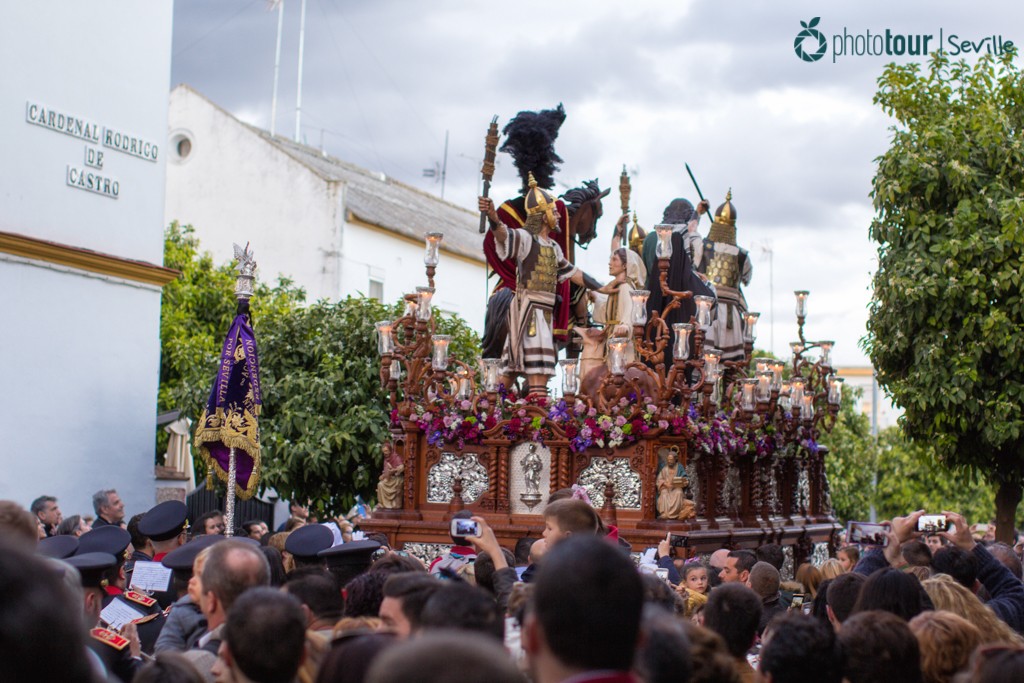
Who participates?
Each procession pertains to one of the over 115 different church in Seville, and every church has an hermandad, or brotherhood, that represents the church. The brotherhoods are in charge of their church’s social calendar, which is including, but not limited to, Semana Santa for Easter. To form part of one of these brotherhoods is viewed as a great honor in Andalusia.
The brotherhoods practice year-round for the Holy Week processions, of which one of the main jobs is carrying the float that forms part of their church’s procession. Those who are underneath the float are called costaleros, and carrying the float, balanced on their necks and shoulders, is an act of devotion and penance. As Seville Traveller states, “the pasos often weigh over 2,000 kg (4,400 lbs), and it takes many months of practice before the big day. On average there are 40 costaleros per paso, with each one supporting a weight of around 50 kg (110 lbs) for approximately 8 hours.”
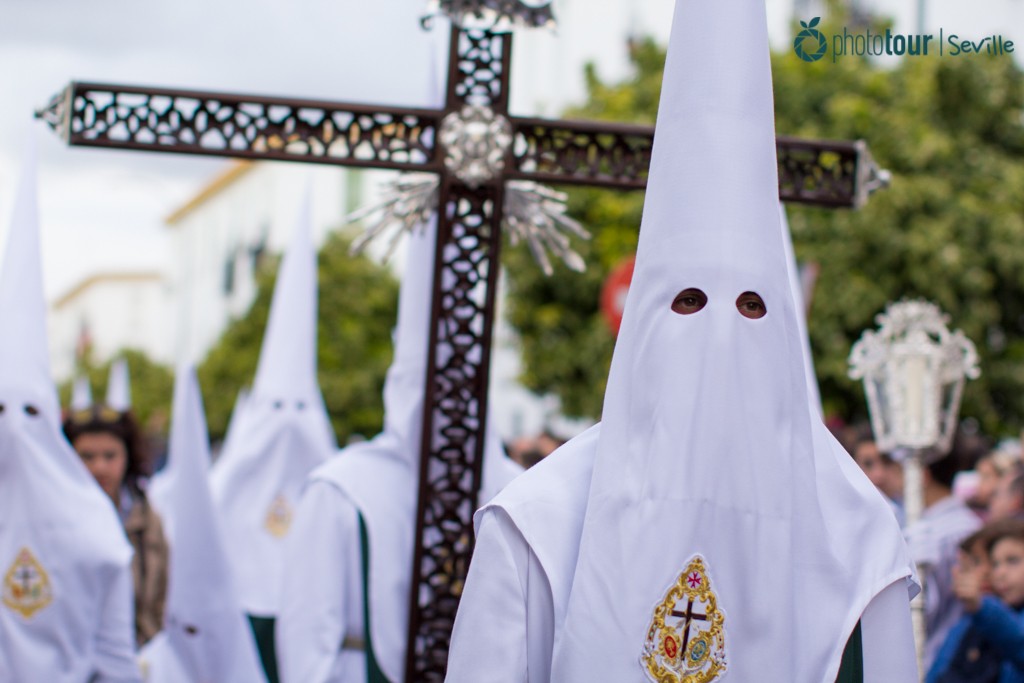
In addition to the floats and costaleros, the processions also typically include both a band of music and nazarenos, who walk in front of the float. The image of the nazarenos—who are dressed in a habit and a cape, with their faces hidden by a pointed hood, which is called a capirote—is powerful and solemn. Each brotherhood’s nazarenos wears a different color, and they carry either a long wax candle, a pole, or a lantern.
While all of these roles are traditionally done by men, women watching the pasos wear a mantilla, which is a large, intricate headpiece with a lace veil, towards the end of the Holy Week for Holy Thursday and Good Friday. The mantilla is all black, accompanied by an all-black outfit, and the woman’s hair is woven through the headpiece to keep it in place.
What does a procession entail?
No matter where the church for each procession is located, they all go on a pilgrimage through the city, “wander[ing] through the narrow streets to the Cathedral. Having passed through the cathedral itself, they then turn for home, resulting in certain processions lasting upwards of 12 hours. Each procession is watched by thousands of people from different vantage points, and onlookers tend to go hours in advance to get a good spot for their favorite processions. You’ll also see large groups of people moving across the city at all hours, going from one procession to the next.
The standard procession starts with a large cross called the Cruz de Guía, or guiding cross, followed by the nazarenos. After that, there is typically a group of altar boys and acolytes carrying incense. The paso, or float, comes after that, sometimes followed by a band of music. After the float are other penitentes, or penitents, who are publicly repenting their sins, and carry wooden crosses. They also wear a habit and hood that represents the brotherhood, but the hood is not pointed like the nazarenos.
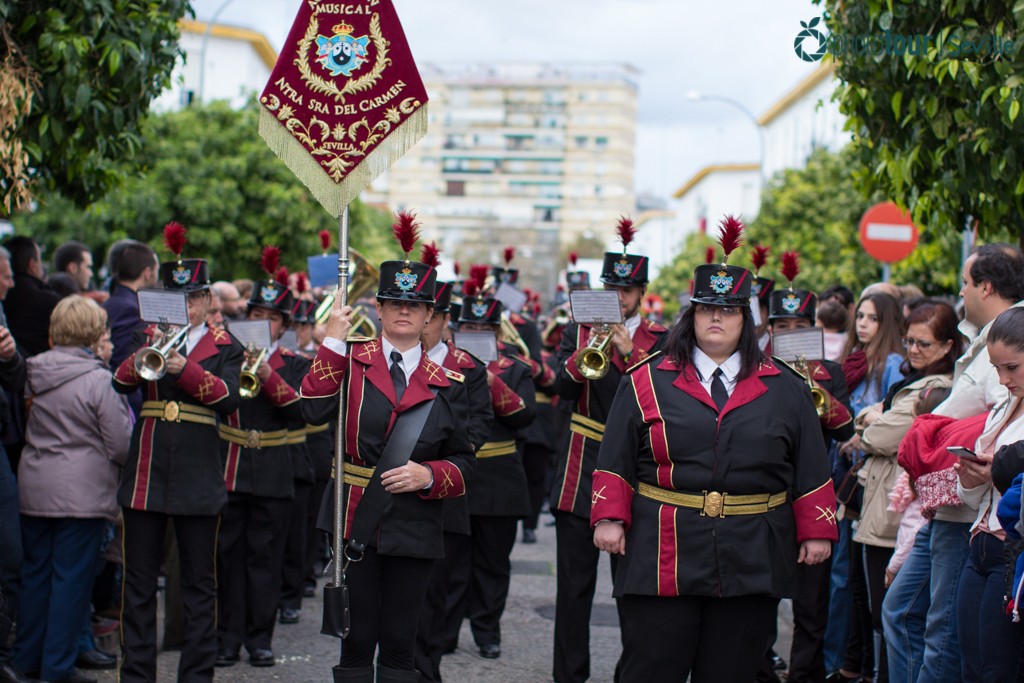
What processions should I see?
Seville swells in size during Semana Santa, and with the influx of people and the sheer number of processions you can go watch, it can be difficult to choose which to attend. The most famous processions include:
- La Paz, which comes from the neighborhood of El Porvenir and happens on Palm Sunday;
- El Gran Poder, which goes through the city center’s popular areas of the Plaza del Salvador and Calle Cuna and happens during La Madrugá;
- La Macarena, which comes from the neighborhood of the same name and happens during La Madrugá; and
- La Esperanza de Triana, which comes from the neighborhood of Triana and happens on the morning of Good Friday.
There is a very special period of time during the Holy Week in Seville, called La Madrugá, which comes the word madrugada, or early morning. La Madrugá is from the night of Holy Thursday to the morning of Good Friday, and there are multiple processions you can see on this memorable evening, including three of the four from the above list. To make your decision easier, you can get all pertinent information on Semana Santa’s processions, including daily schedules, from an app, called “Paso a Paso”, which you can download for free.
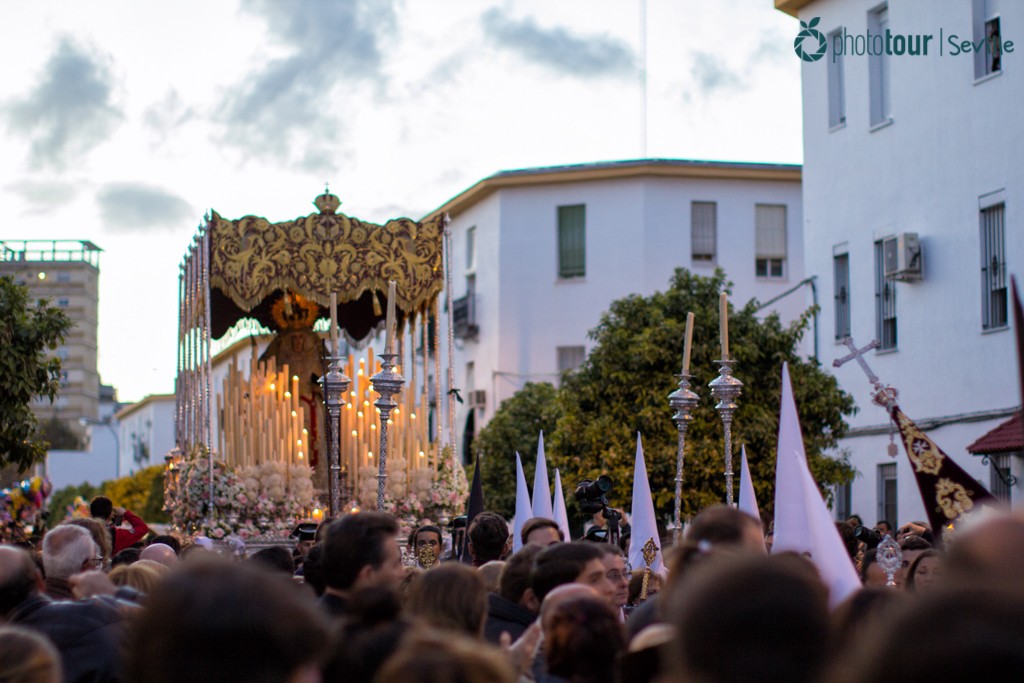
What should I eat?
While in Seville for Easter, you have to try the traditional Holy Week dessert of torrijas, which are similar to French toast, a typical American breakfast dish. They are made from slices of bread that are dipped in milk and egg and then fried in extra virgin olive oil. Many people add cinnamon, sugar, and orange or lemon peel to the milk mixture, which gives this dessert a delicious citrusy and sweet flavor. Other popular treats in Semana Santa include pestiños con miel and roscos or rosquillas, which have a different shape, but a similar flavor, and are also fried.
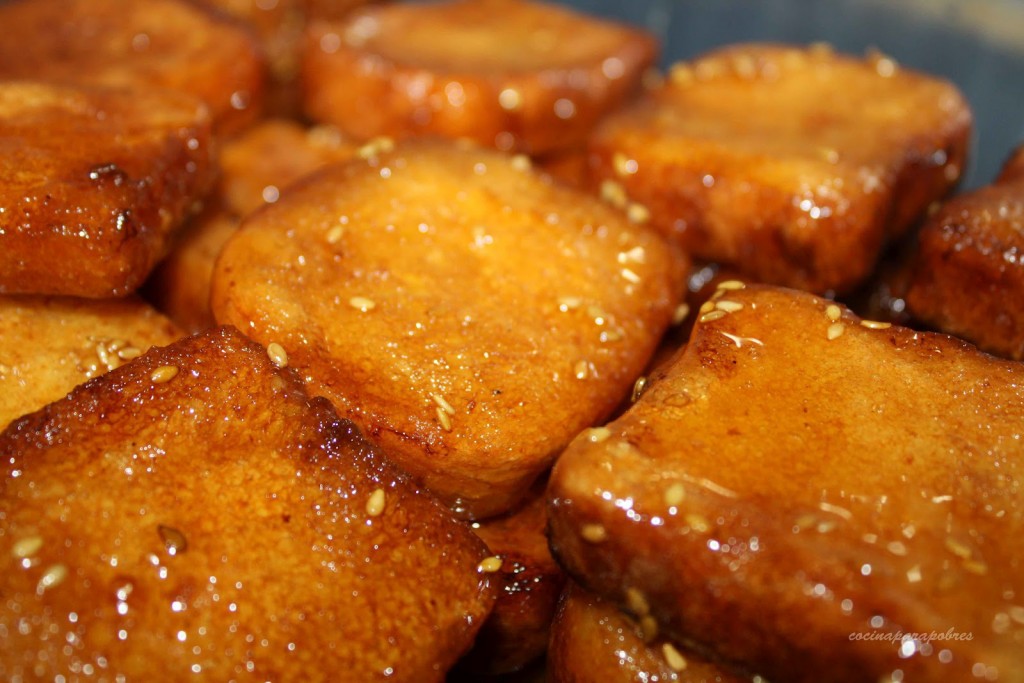
With a celebration this spectacular, you’ll definitely want to take some photos of the “Holy Week in Seville” to commemorate the experience, and Photo Tours Seville is here to help!
Book a photography tour to ensure you capture all of the best Semana Santa moments during Easter in Seville.

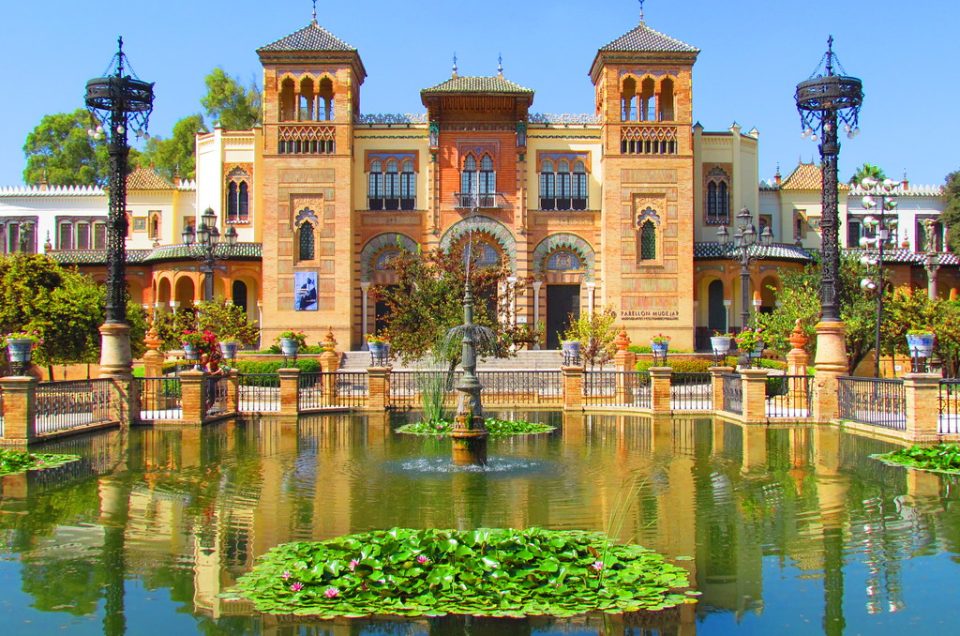
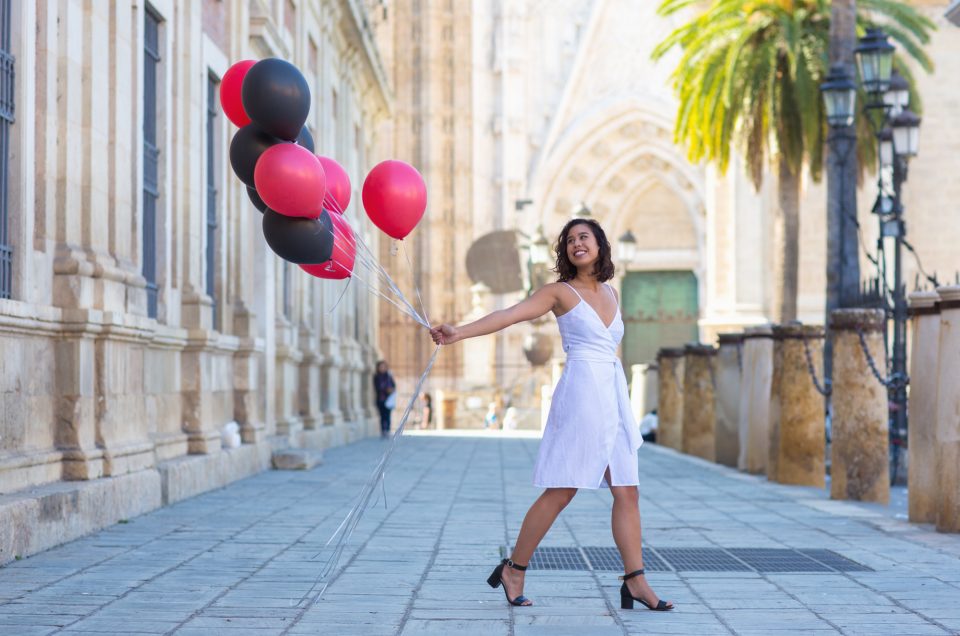
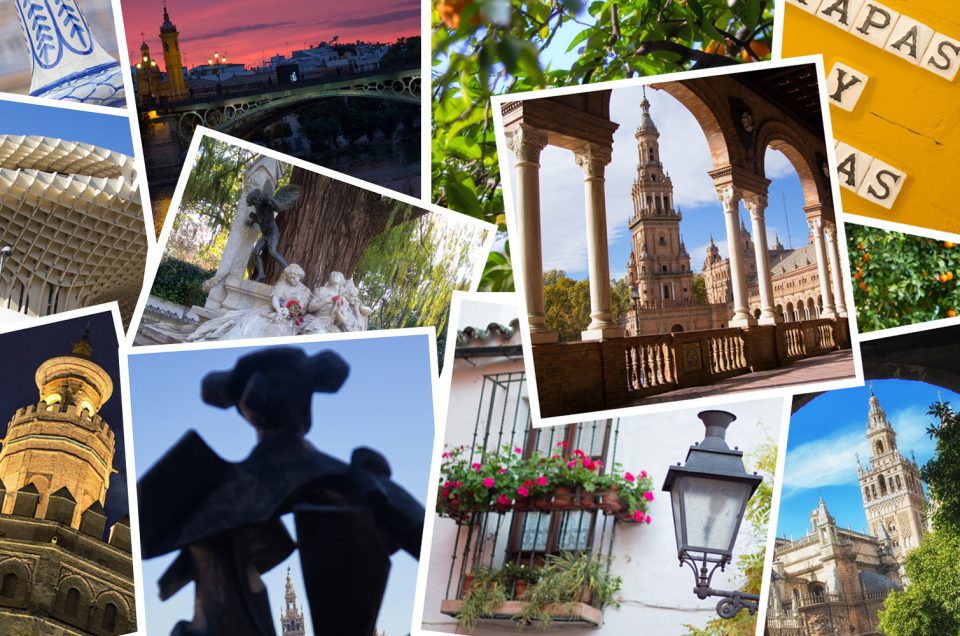

 Enjoy a photo tour or a photography workshop in Seville with us. Meet our team of professional photographers and discover why we offer you one of the best things to do in Seville. You enjoy it, we save it!
Enjoy a photo tour or a photography workshop in Seville with us. Meet our team of professional photographers and discover why we offer you one of the best things to do in Seville. You enjoy it, we save it!